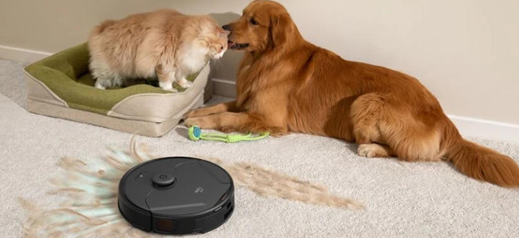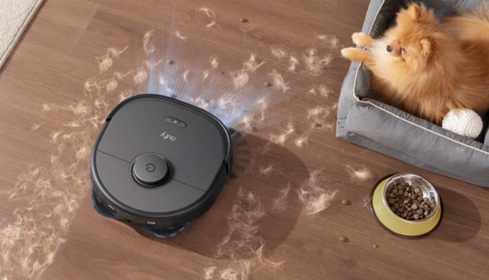Family life often brings a steady rhythm of activity, from children playing on the floor to pets wandering freely through the home. With so much going on, keeping floors clean can feel like an impossible task, which is why many households turn to robot vacuums for help. These devices promise convenience, yet some parents and pet owners hesitate, worrying about how safe automation really is around their loved ones. The good news is that modern robots come with built-in protections designed to reduce risks while offering real relief from daily messes. In this article, we will explore the safety features, practical strategies, and best practices for using robot vacuums in homes with both pets and children.

Built-In Safety Features for Peace of Mind
Collision Sensors and Bumpers to Avoid Impacts
Robot vacuums are equipped with sensitive collision sensors and soft bumpers to reduce the risk of accidental harm. These sensors allow the device to detect obstacles such as toys, pet bowls, or a child’s foot before making direct contact. The bumpers ensure that if contact does occur, it is cushioned and unlikely to cause discomfort. This design reassures parents who may worry about curious toddlers sitting nearby or pets resting in the middle of the room. With these safety measures, the robot can work quietly in the background without disrupting family routines.
Cliff Detection to Prevent Falls Down Stairs
Another important safety feature is cliff detection, which prevents the robot from tumbling down staircases or elevated platforms. Infrared sensors scan the floor ahead, automatically stopping or redirecting the vacuum when a drop is detected. This not only protects the machine itself but also ensures that children or pets are not startled by sudden falls or accidents. Families living in multi-level homes especially benefit from this function, as it adds peace of mind when the robot operates unsupervised. By relying on these safeguards, parents can trust the robot to move safely around their living space.
Smart Boundaries and Access Control
Virtual Walls and No-Go Zones for Hazardous Areas
Many robot vacuums offer digital boundary settings that help families keep them away from risky or sensitive spots. Through an app, parents can set up virtual walls or no-go zones that block access to stair landings, play areas, or pet feeding stations. This prevents the robot from interfering with delicate items like Lego structures or water bowls that could spill easily. For households with pets, creating no-go zones around litter areas or training pads can avoid messy encounters. These tools give families more control, allowing the vacuum to focus only on safe and appropriate cleaning zones.
Scheduling Cleanings During Naptime or School Hours
Scheduling is another effective tool that allows families to balance cleaning with household activities. By setting the robot to run during naptime, school hours, or evening walks with the dog, the machine operates when floors are clear and fewer distractions occur. This not only reduces interruptions for children but also avoids situations where pets might become nervous around the moving device. Parents find it easier to maintain harmony when cleaning happens during quieter times. Smart scheduling ensures both safety and convenience without requiring constant supervision.
Handling Small Objects and Pet Messes Safely
One of the main concerns for families is how robot vacuums deal with small items and unpredictable pet accidents. A child’s dropped toy, a piece of food, or a spilled drink can become a challenge if the robot tries to clean it without intervention. For pet owners, sudden accidents like urine or vomit need to be addressed quickly by hand to prevent spreading or damaging the machine. Many families searching for advice on how to get rid of dog smell in house eventually realize that manual steps come first, while the robot helps with ongoing maintenance. With the right balance of supervision and automation, robots remain safe and effective even in these tricky scenarios.
Teaching Kids and Pets to Coexist with the Robot
Introducing a robot vacuum to a home with children and pets requires patience and gentle guidance. Kids should be taught not to treat the machine as a toy, helping them understand that it serves a useful purpose and must not be climbed on or dismantled. Pets also need time to adjust, as the sound and movement of the robot can initially cause stress or curiosity. Gradually exposing them to the device and rewarding calm behavior helps create a smoother transition. Over time, both kids and pets learn to coexist peacefully with the robot as part of the household routine.

Conclusion
Robot vacuums bring practical relief to households managing the combined messes of pets and children. With built-in safety features, smart scheduling, and careful handling of sensitive situations, they can operate reliably without posing risks to family members. Like eufy’s models, which combine safety technology with thoughtful cleaning features, these devices give families confidence in adopting automation. It is important to remember that no machine replaces parental guidance or responsible pet care, but rather serves as a supportive partner in keeping the home comfortable. With the right precautions, families can embrace automation with confidence and enjoy a cleaner, more harmonious living space.
